AI Summary
Do you want to configure your WordPress email settings?
The default WordPress email settings lead to deliverability problems. Your emails may have the wrong sender address, too.
In this post, we’ll show you how to configure your WordPress email settings correctly to ensure swift and reliable delivery at all times.
Create Your WordPress Form Now
In This Article
How to Configure Your WordPress Email Settings
Configuring WordPress email settings is really easy if you already have your domain connected with a mailer. If not, follow the step-by-step tutorial below to complete your WordPress email configuration using WP Mail SMTP.
1. Choose an Email Provider
First, you’ll need to create an account with an email provider to handle your emails.
Think of this like an email account that’s solely dedicated to sending emails from your site.
SendLayer is our top recommended mailer service. Here’s our detailed SendLayer review if you want to know why we recommend it.
To start creating your account, visit the SendLayer pricing page and select a plan that suits your needs.
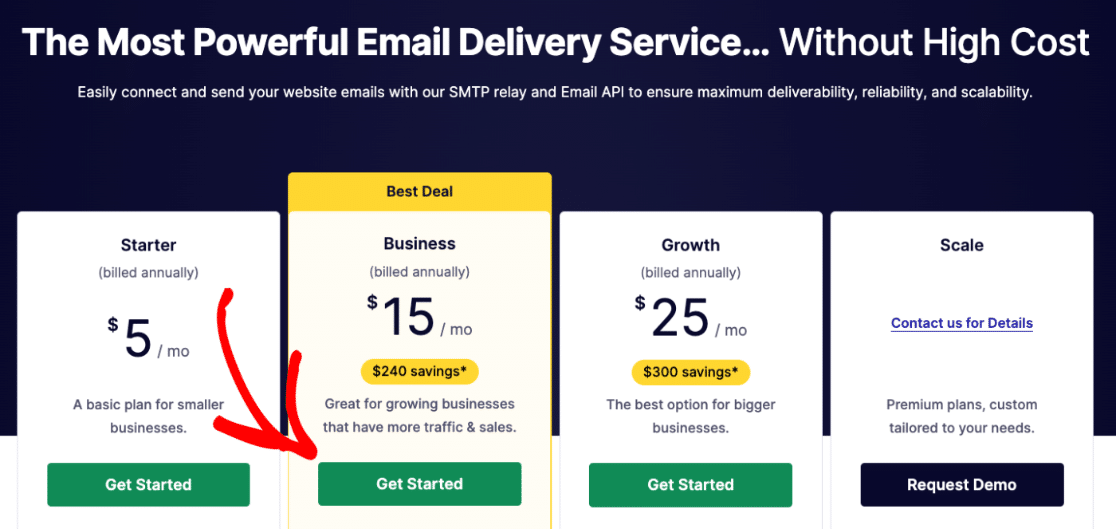
If your email sending volume is small or you want to try out SendLayer first, you can get the free trial instead. The free trial lets you start sending emails for free!
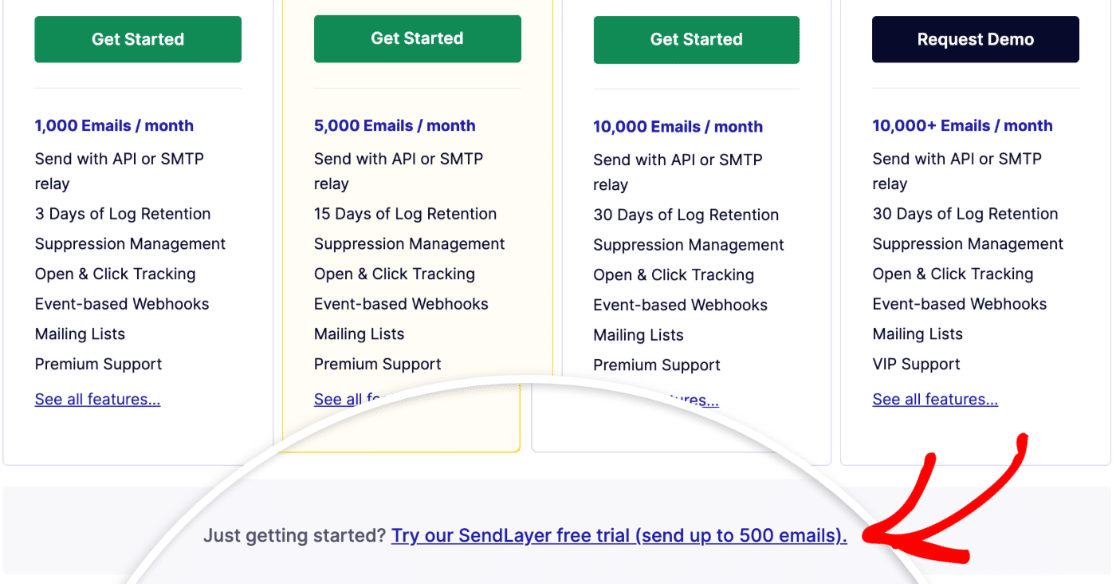
Now provide your name, email, and credit card information as requested. When the account signup is complete, click on Continue To Dashboard.
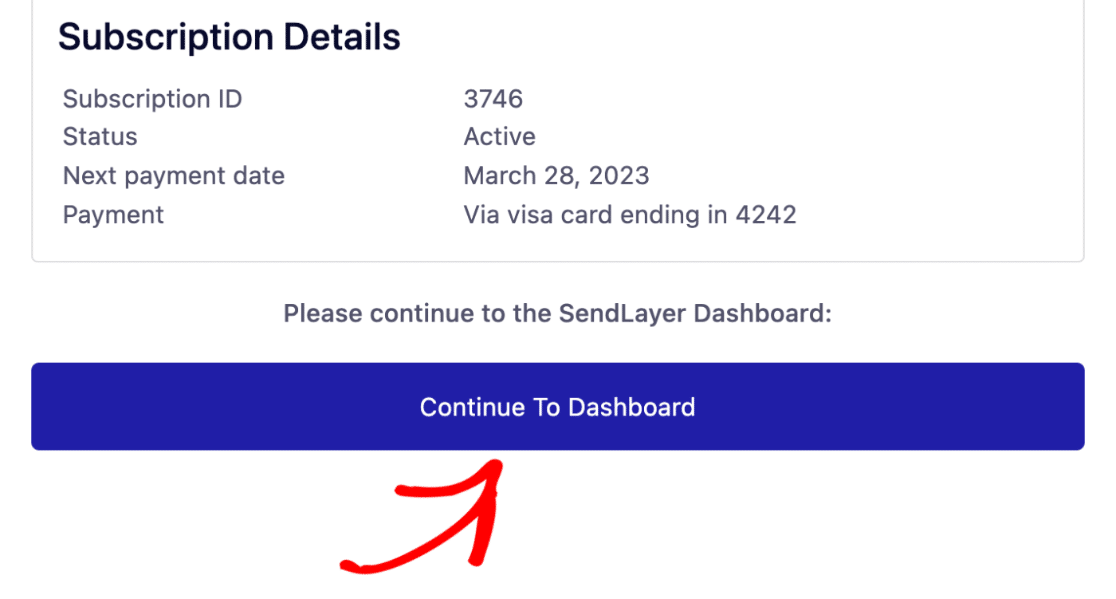
Great! You’ve just set up your SendLayer mailer account. Next, we’re going to add your domain to your SendLayer account.
2. Authorize Your WordPress Domain
Domain authorization is important to ensure reliable email sending from your WordPress site. Authorizing your domain allows email servers to recognize you as a verified sender. That means your WordPress emails won’t end up in spam.
To authorize your domain with SendLayer, go to your SendLayer account dashboard and click on Add Domain.
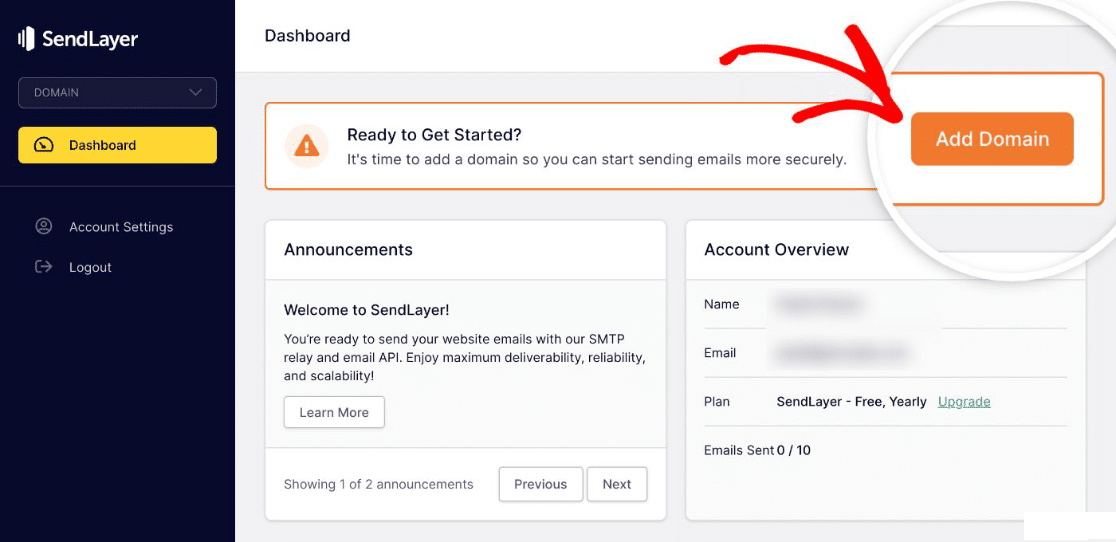
Enter the domain name of the email address that you want to set up as your sender. Then click on Add Domain.
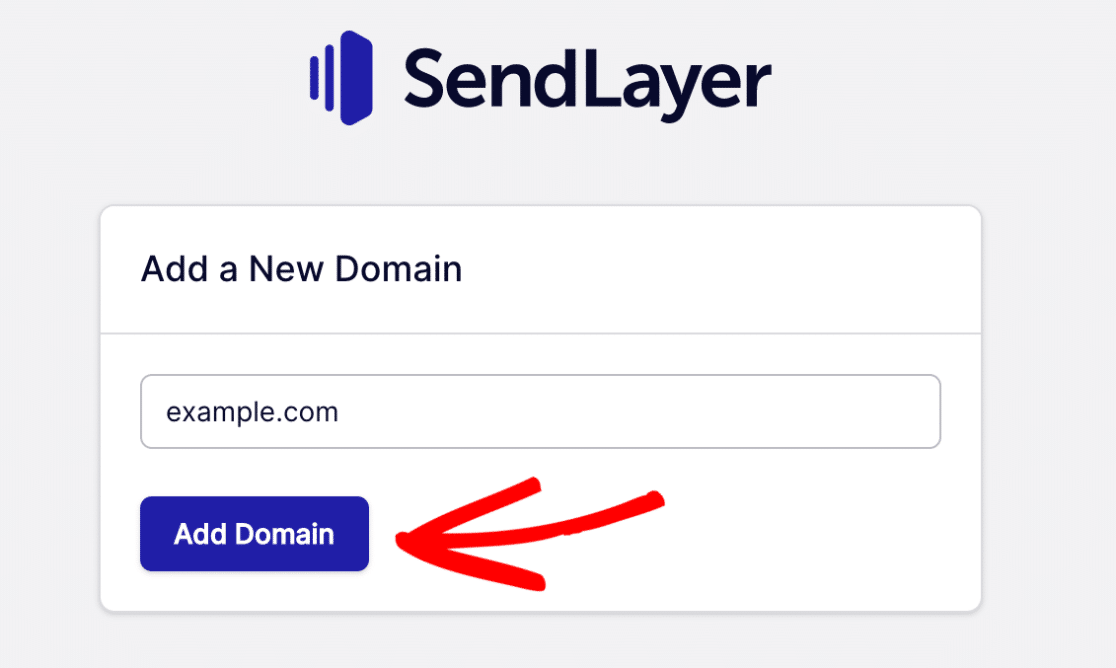
SendLayer will now automatically generate 5 types of DNS records for your domain.
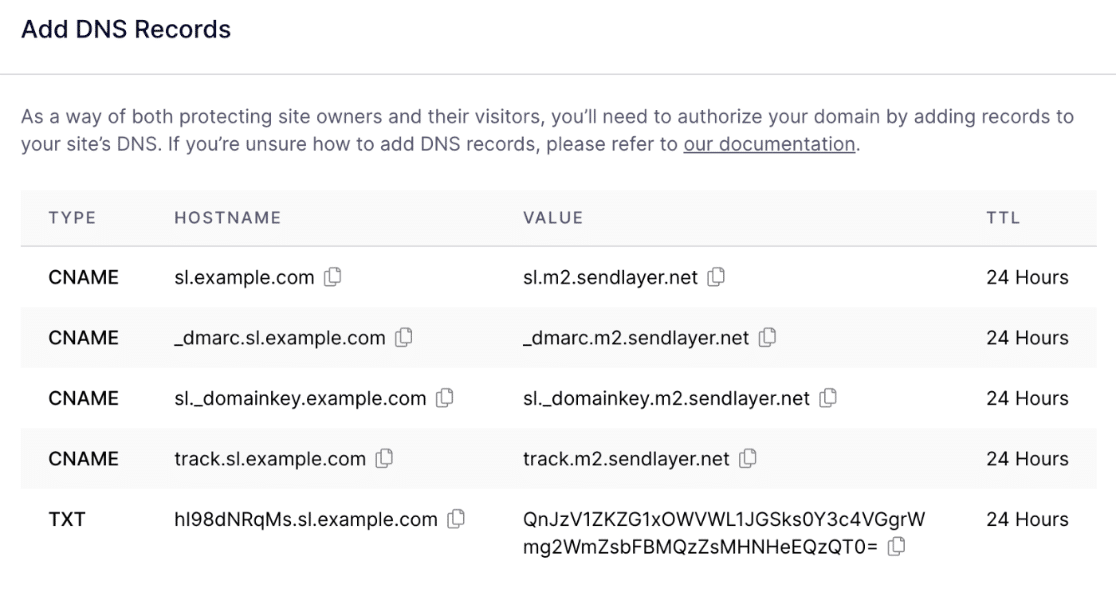
Copy these records and paste them into your website’s DNS settings one by one. You’ll usually find these DNS settings in the WordPress hosting account for your site.
Once you’ve added the required DNS records, checkmark the box next to the text I have added these DNS records and am ready to proceed.
Then press the Verify DNS Records button.
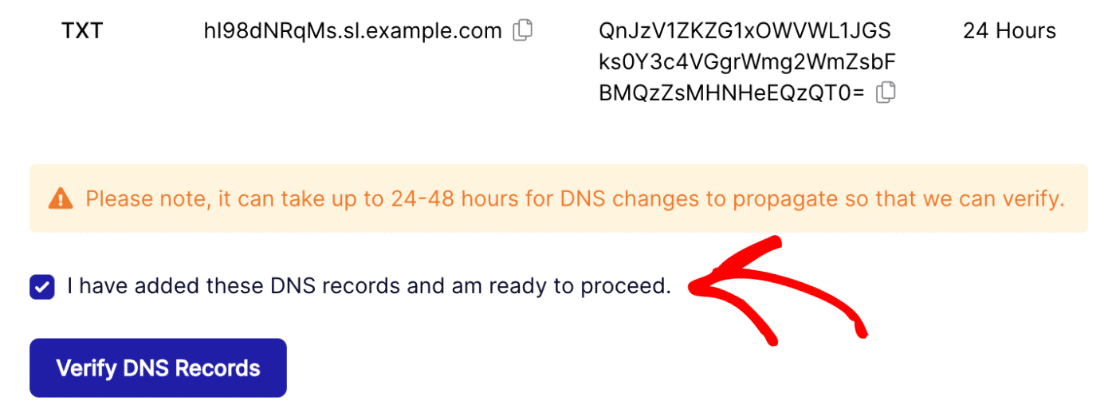
Keep in mind that it may take up to 48 hours for the DNS changes to take effect.
To check your domain authorization status, return to your SendLayer dashboard and click on Settings from the vertical navigation on the left.
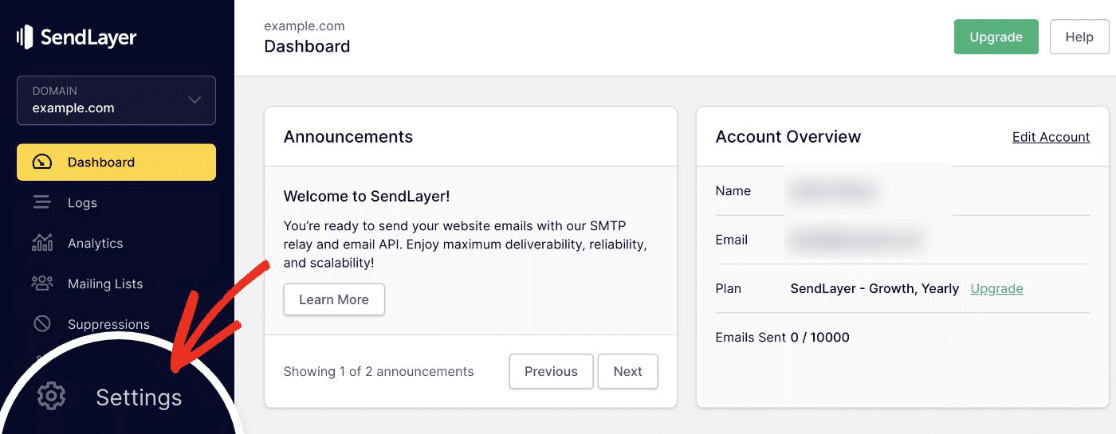
Now, click on the DNS Record & Settings tab from the horizontal navigation bar on the top of the page.
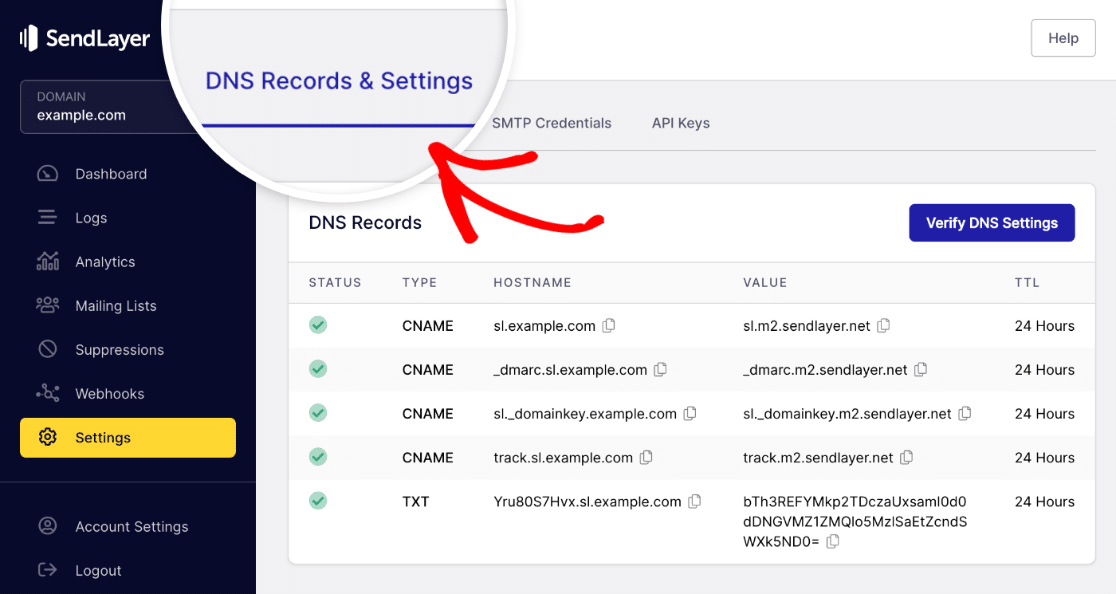
If the DNS settings have been successfully verified, you’ll see a green symbol under the Status column for each type of DNS record.
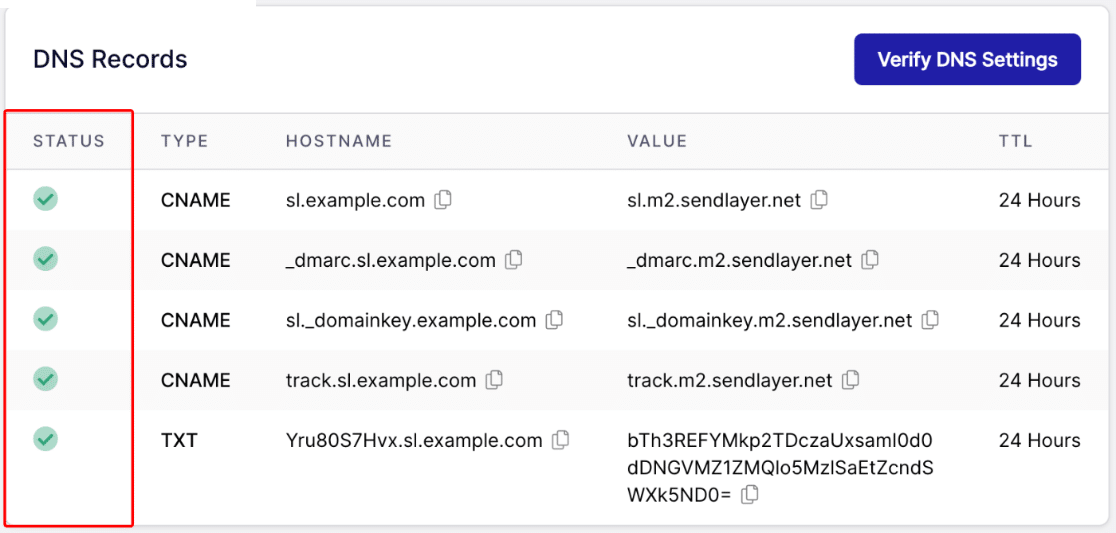
If you need help changing DNS settings of your site, check out this guide on adding DNS records for your site.
3. Connect Your WordPress Site to SMTP
WordPress doesn’t allow you to use SMTP or an external mailing service. We can fix that with a plugin.
We’re going to set up WP Mail SMTP in WordPress so we can connect your site to SendLayer. If you haven’t already got an email plugin, install and activate the WP Mail SMTP plugin on your site.
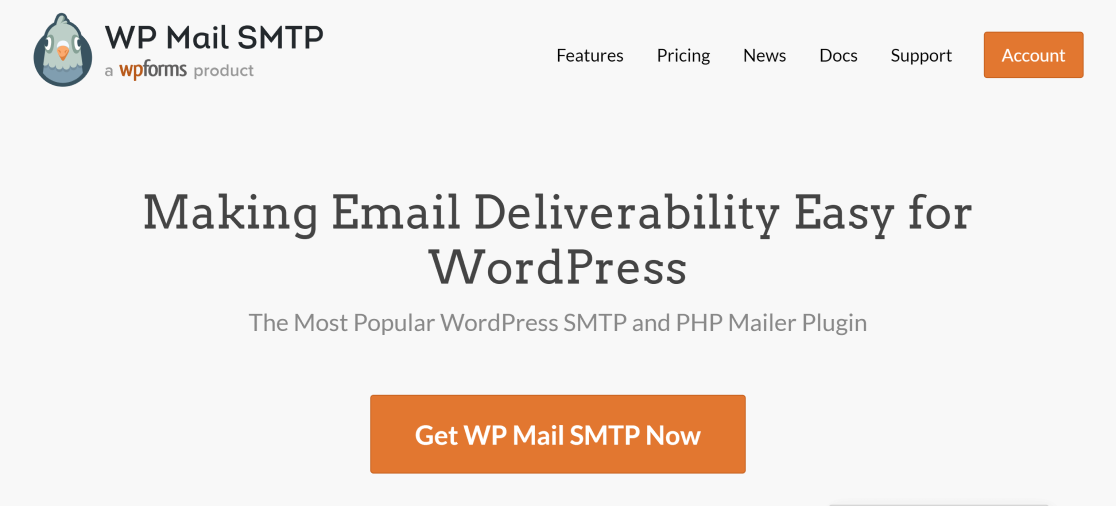
Once WP Mail SMTP is installed and activated, click on WP Mail SMTP » Settings from your WordPress admin area.
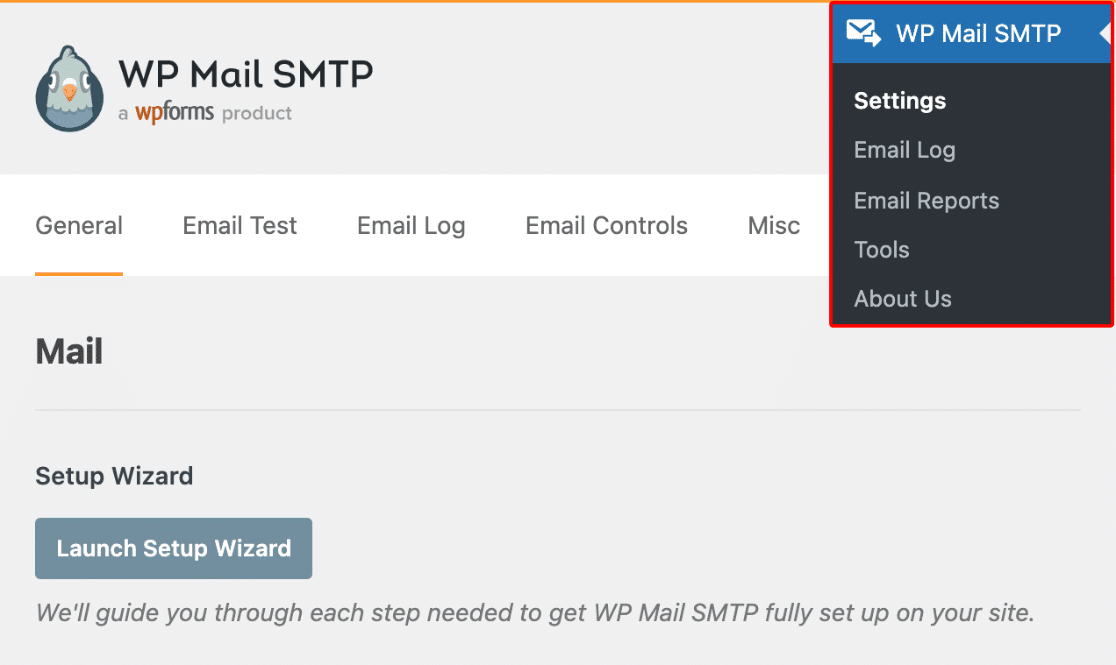
On this settings page, here are all the different options you’ll need to configure:
4. Choose From Email & From Name (Sender Details)
The From Email is the email address that all of your website’s emails are going to be sent from. This email address should use the same domain that you just authorized with SendLayer. If you have a business email address, it will look like [email protected].
Scroll down the settings page to the mail section. Then, enter your email address within the From Email field. If you’d like the From Email to be the same across your entire site, you can check the box labeled Force From Email.
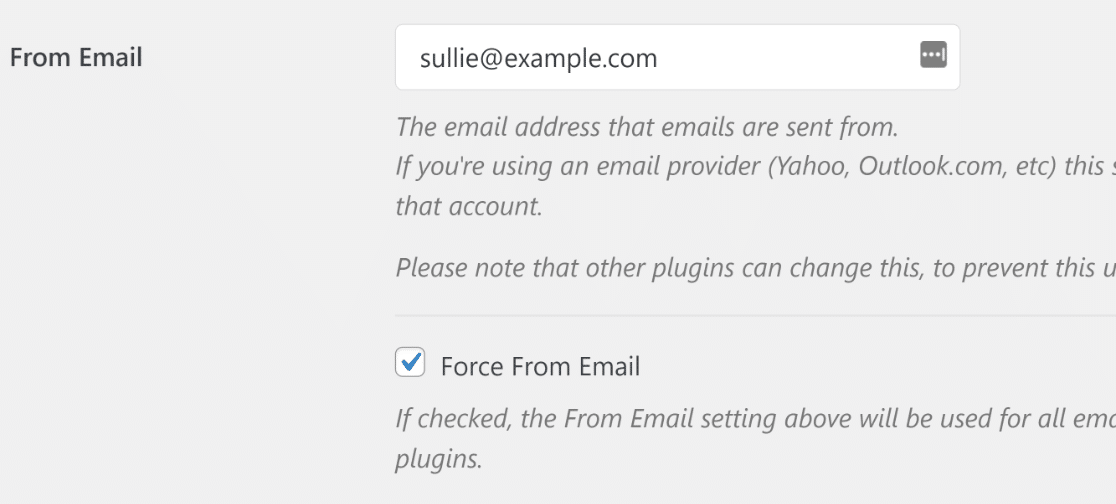
This will save you the trouble of editing the email settings throughout your site (in all form emails, etc). We strongly recommend you check this box.
Moving on, the From Name is set to the site name by default. But you can change this to any text you’d like.
You can also check the box next to Force From Name to apply this setting to all of your emails across your site.

This sets up your basic sender details.
5. Complete Your Email Setup
Next, in the Mailer section, select SendLayer.
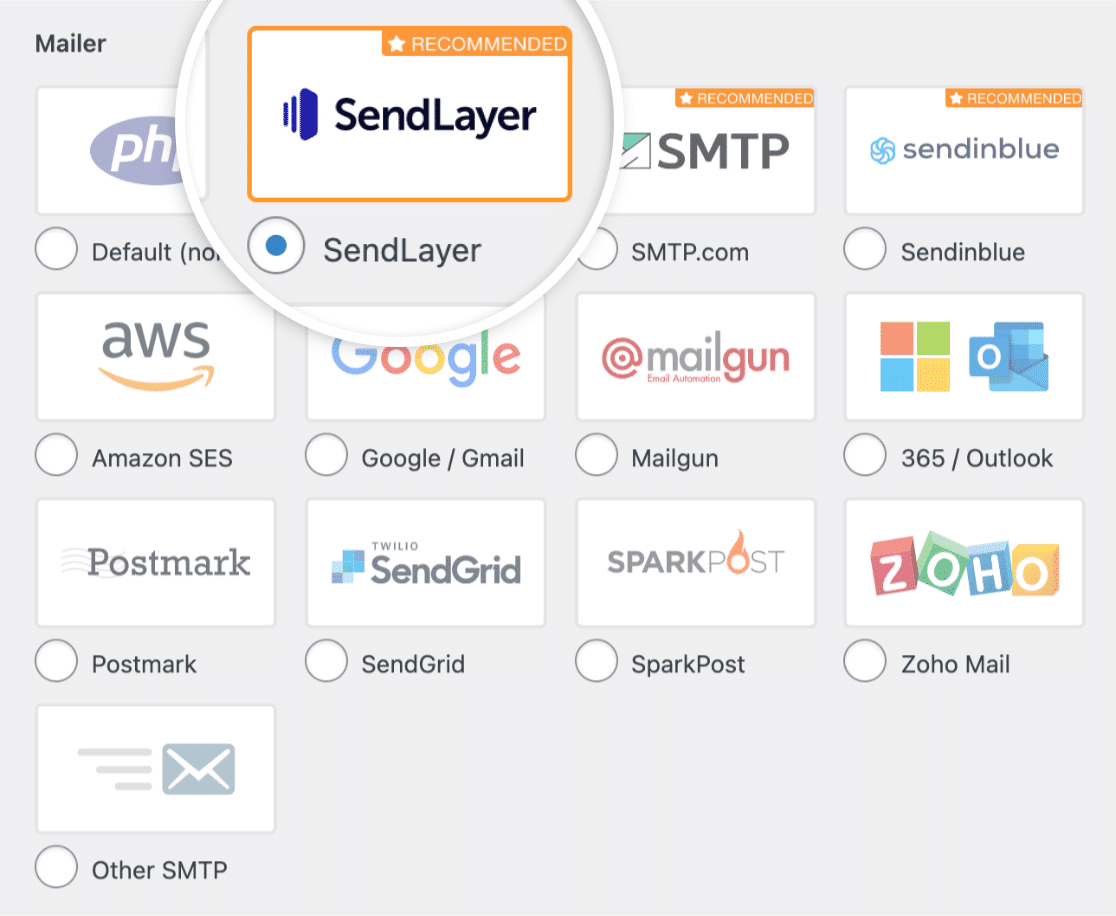
Then you’ll want to fill in the API Key.
To locate the API Key for your SendLayer account, click on the Get API Key link.

The link will take you to your account’s Domain Settings page. You’ll fnd your API Key here.
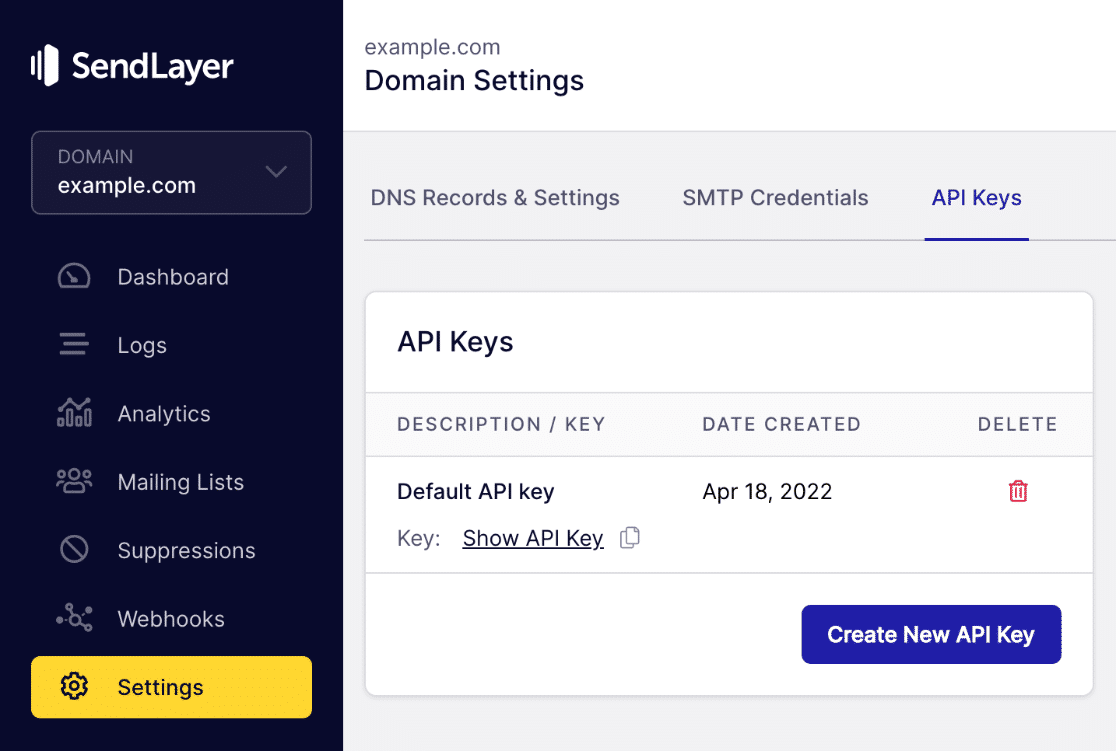
Click on the copy icon next to Show API Key to copy it into your clipboard.
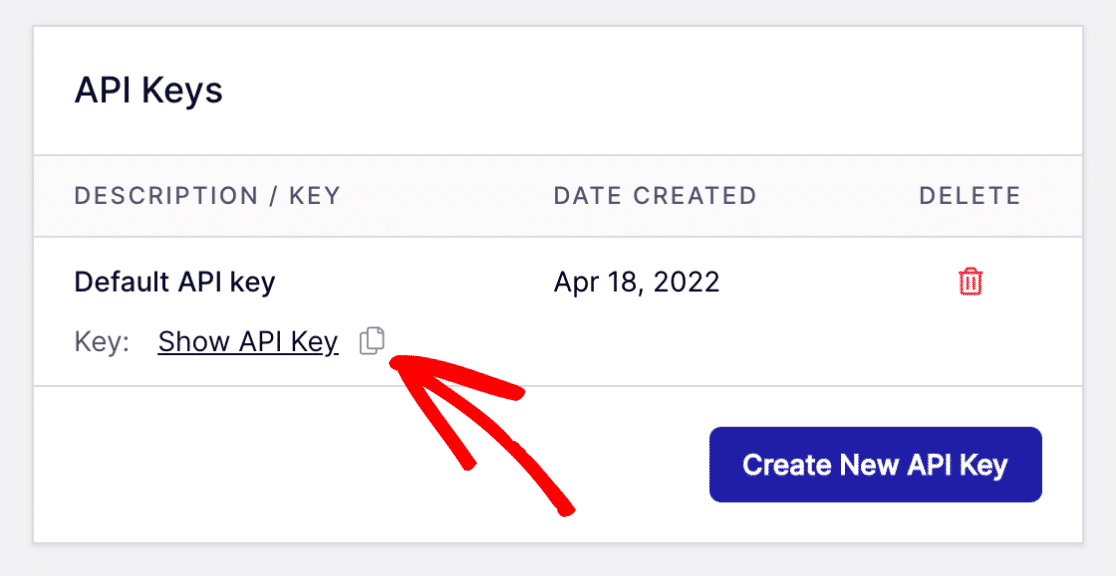
Return to your WP Mail SMTP Settings page and paste your SendLayer API Key in the relevant field.

Click the Save Settings button to save changes.
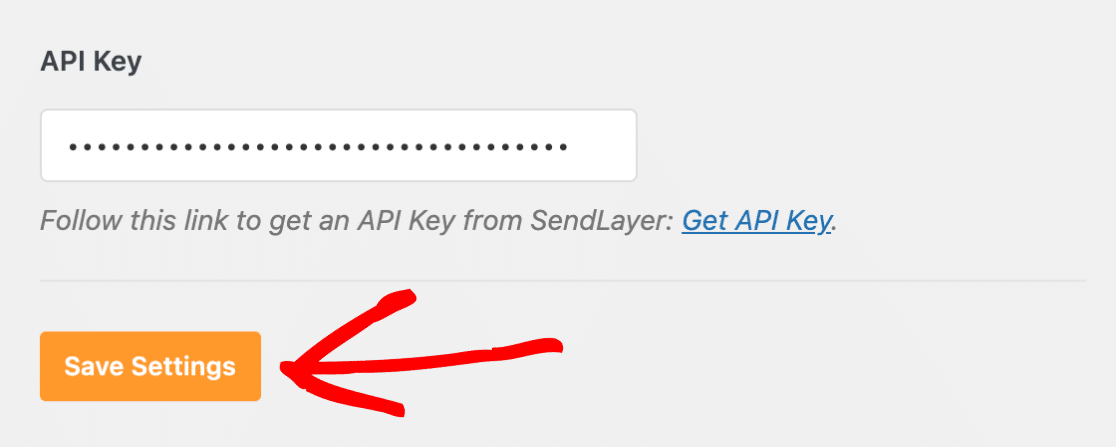
You’re almost there! We just need to test now that everything is functioning nice and smooth.
6. Test Your WordPress Emails
Now that your SendLayer and WP Mail SMTP settings are ready, let’s send a test email. To do this, click on the Email Test tab in your site’s WP Mail SMTP settings.
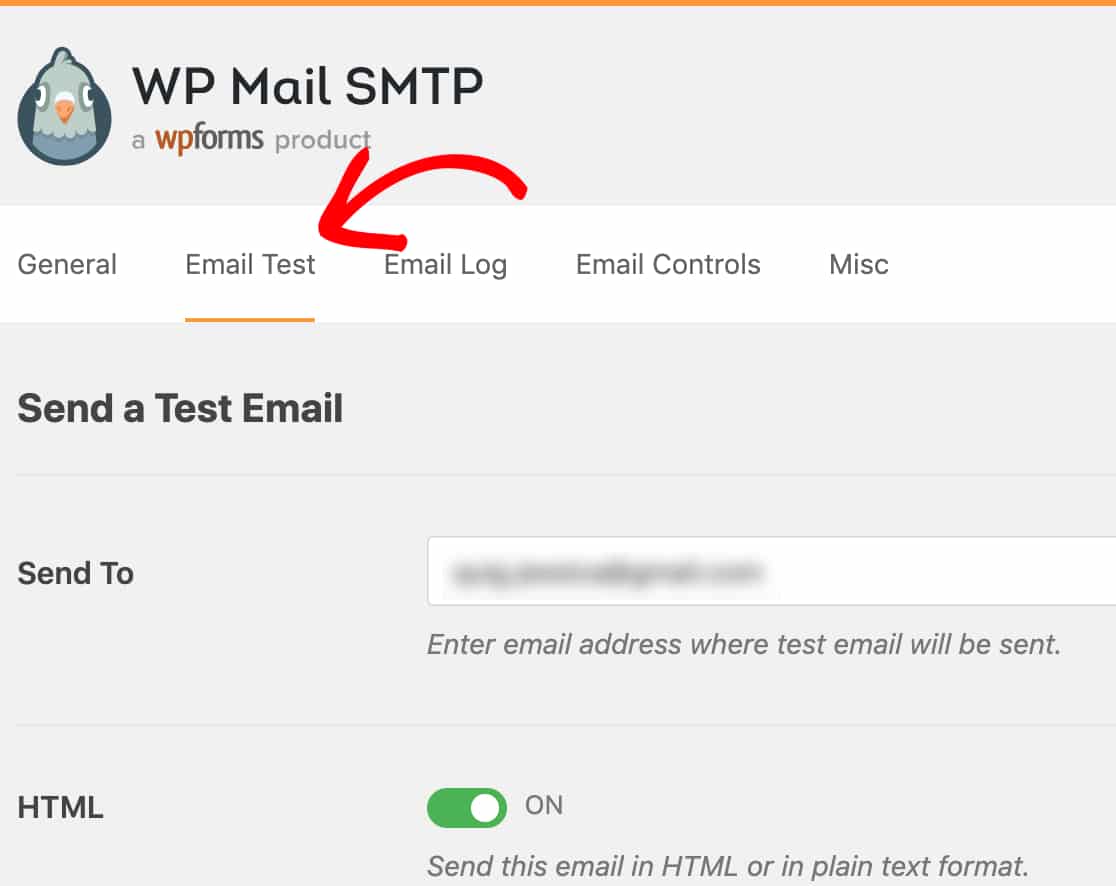
On this tab, you can enter any email accounts that you have access to in the Send To field. Then, click the Send Email button.
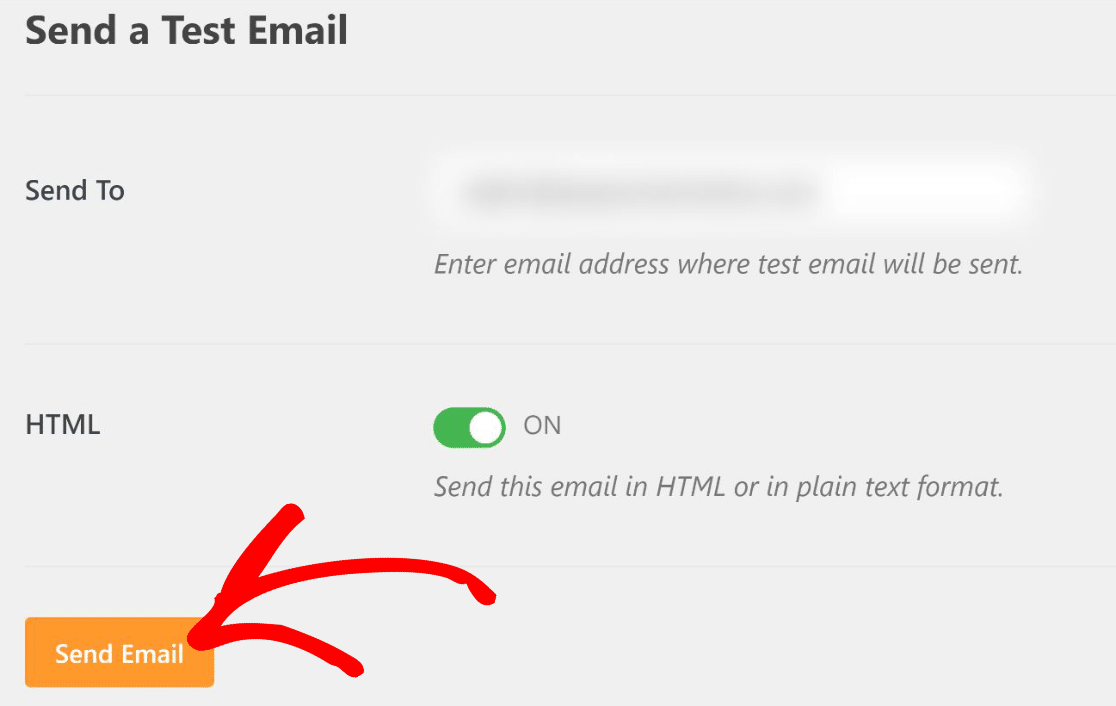
Once the email has processed, you’ll most likely see a success message.
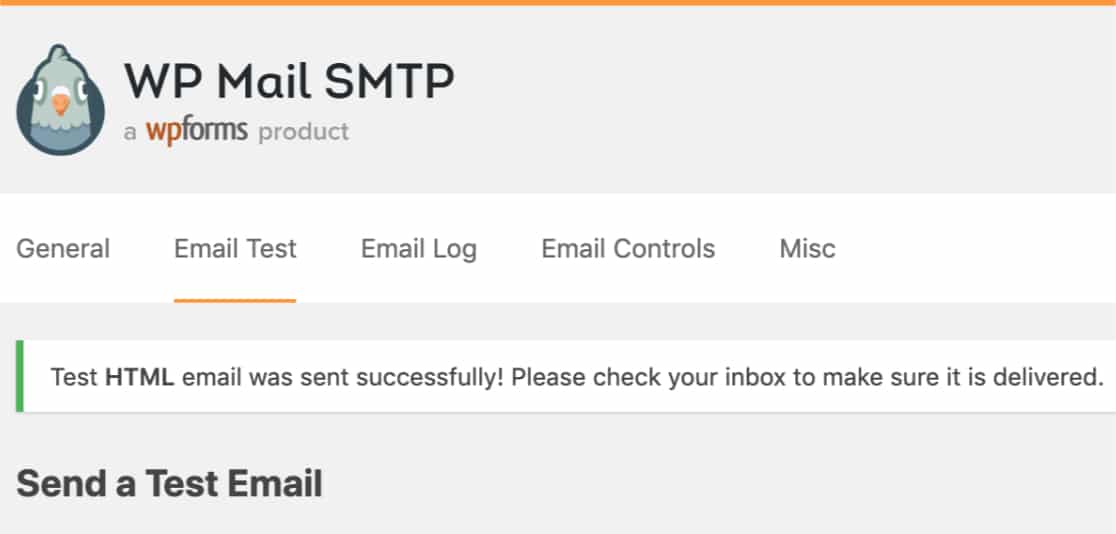
Next, check the inbox for that email address. You should receive the email for this test very soon.
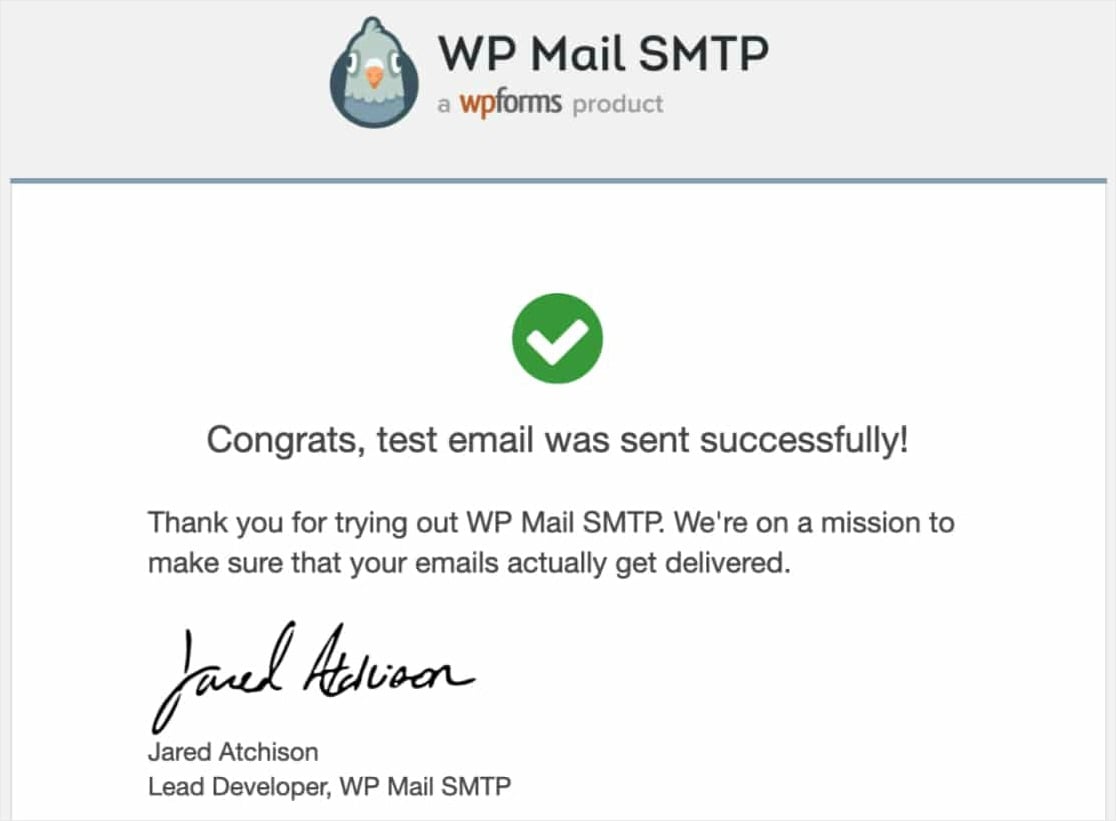
And that’s it! You can now correctly configure your WordPress email settings and never worry about delivery errors again.
FAQs on WordPress Email Settings
Setting up emails can be daunting the first time you do it. Here’s some extra help.
Why Can’t I Use the Default Email Settings in WordPress?
By default, WordPress uses the PHP Mail to send emails like form notifications, user activation, lost password, and others.
Unfortunately, WordPress is notorious for email delivery issues. Commonly, these issues arise because your WordPress hosting server is not properly configured to use the PHP Mail function.
Besides, PHP Mail doesn’t add any authenticating elements to your email messages. This means that your emails are very likely to be treated as spam and never reach your recipient’s inbox. Email deliverability problems are common for Gmail users because Google has very strict rules against spam.
How Does SMTP Fix WordPress Emails?
SMTP stands for Simple Mail Transfer Protocol. It’s one of the most reliable ways to send emails on the internet.
With SMTP, you get high deliverability rates, avoid the spam folder, and your emails reach recipients almost instantly.
So, to fix email issues on your WordPress site, you need to replace PHP Mail with SMTP. The easiest way to do that is by using a plugin called WP Mail SMTP.
It’s used by so many websites for a reason — it lets even non-technical people set up their WordPress email settings to use SMTP instead of the default PHP mail() function.
Next, Fix Email Notification Issues
WP Mail SMTP is a super effective solution for fixing form notification issues. You can use WP Mail SMTP to fix problems with Formidable Forms email notifications, or Ninja Forms not sending email.
Next, make sure to read our post on why you should always avoid WP Mail SMTP Pro nulled plugins.
So what are you waiting for? Take advantage of the 100% Money-Back Guarantee and get started with the world’s most popular SMTP and PHP mailer plugin today.
And if you like this article, then please follow us on Facebook and Twitter for more free WordPress tutorials.




While good info, it also seems like a marketing ploy for SendLayer. Sorry, but adding yet another service for a monthly fee is not always desired or feasible. I thought this article would offer more of the different options you can use. Personally, I configure the SMTP with my email server info with appropriate changes to DNS. The article would have been much better if it didn’t just focus on SendLayer. Just some constructive criticism. WPForms is still a GREAT product!!!
Hey Vincent, thank you for the feedback and we apologize for any confusion!
I would recommend following along this guide on how to set up SMTP Using the WP Mail SMTP Plugin.
I hope this helps!
Dead link. I agree with the original post. Not paying of yet another service.
Hey Bryan, thank you for the feedback and we apologize for any confusion!
I would recommend following along this guide on how to set up SMTP Using the WP Mail SMTP Plugin.
I hope this helps!
Is there a way to tell who is sending me email to my wordpress site rather than my own email account sending them to me?
Hi Micheal,
You can absolutely set up automatic form notification emails, for both yourself and anyone else you like (including the person who filled out the form).
We have a great tutorial on that here. And if you’d prefer, we have a video that walks through the setup process here.